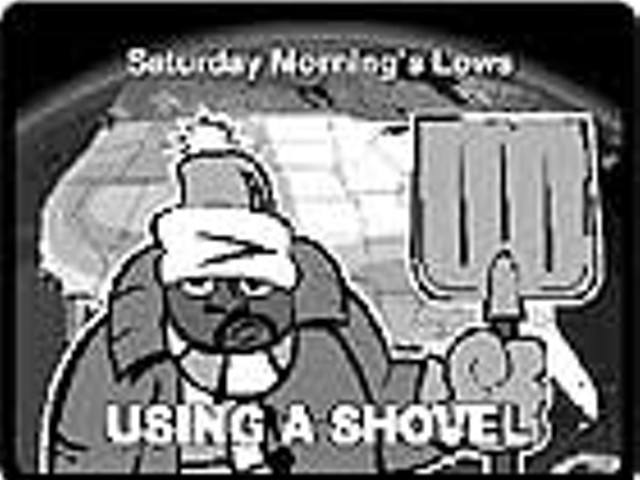Do people really need cars? No. Most humans who’ve lived on this planet, including the ones living here now, have not owned cars. (Okay, you could say the same thing about flush toilets, central heating and self-adhesive stamps, none of which I’m proposing to get rid of, any more than I’m proposing to get rid of automobiles.)
Do people want cars? Of course, especially here, where we want more of them per capita than anywhere else in the country. Of course, we have no competitive mass transit system as, say, Chicago does. Regardless, a recent survey found that almost a third of metro Detroiters plan to buy or lease a vehicle this year; that figures out to roughly twice the national average.
Which is what makes Detroit so quintessentially American, and what makes the North American International Auto Show crucial viewing for the several thousand national and international journalists who travel here each January.
They want to see how the industry presents its not-necessarily-necessary products to Detroiters, who remain the world experts when it comes to desiring the machines that have made us who we are.
Cars have created our society, its individual mobility and freeways and sprawl. They’ve also created a back-to-the-future nostalgia for what we imagine — accurately or not — to have been the pleasures of the preautomobile city, which the fulfillment of our vehicular dreams — our use of cars — has rendered outmoded, inconvenient and depopulated.
Speaking of the city of dreams, the Auto Show’s most revealing and opulent displays have abandoned Las Vegas-style hype for an urbane, architectural pitch. This year, it’s not a question of how gaudy you can be, with the prize going to whoever shouts brand names the loudest.
This year, the high-end game is all about the construction of sophisticated urban space, where our contradictory wishes — for retro-cars, and for the city whose future the cars foreclosed — can coexist.
The auto show is selling pay-per-view wish fulfillment, a city of waking dreams, about being the kind of person who could live up to the urbanity embodied in the neo-retro vehicles we’ve come to desire, from the car-of-the-year VW Beetle to the relaunched Ford T-Bird.
The Volkswagen display, for instance, looks more like a hip downtown gallery specializing in video art than like anything overtly automotive and/or commercial. The front is all glass, steel and monitors; the facade will remind you of places in Manhattan or the near north side of Chicago.
Then you walk through a beautifully contrived tunnel — it might pass for a piece of installation art — to reach the payoff on the lower level, where it’s not the future that awaits, but the neo-Beetle past.
DaimlerChrysler — innovators of the retro-looking PT Cruiser — has opted not so much for the downtown scene, but for an architecture of classic sophistication. Its two-level pavilion is built of brushed steel, natural wood and glass; the color scheme, like the lighting, is rich and understated. Taken together, its elements have the appearance of a suave, urban neighborhood of bistros and coffeehouses and boutiques. A kind of Cobo Hall-meets-Upper East Side of New York. And speaking of sophistication, don’t miss the Chuck Close-like mural.
The grandest of the city-dreaming displays is the multistory installation built by Ford. Almost half of this year’s exhibitors have adopted bilevel construction, in order to increase available space. But nobody has equaled the architectural extravagance of Ford.
Its display required 200 tons of structural steel to build, and includes a 350-seat theater and a second-story pedestrian gallery 100 yards long. The theater, in particular, is reminiscent of Frank Lloyd Wright’s Guggenheim Museum in New York.
Like the displays of each of the other major players at this year’s auto show, the architecture here is created on behalf of a neo-retro futurity — looking forward to Modernity as if it hadn’t happened yet — with the city occupying a central role. The end is a desirable fantasy of an urbanism abetted by cars, rather than hostile to them, and vice versa.
The predominating culture is urbane and sophisticated — right down to the gallery-derived couture of the spokesmodels, many of whom have eschewed glitter and décolletage for a hipster’s black.
Even the furniture has become party to the culture of quotable modernity. The iconic sources — Le Corbusier and Arne Jacobsen — supplying the familiar vernacular of black leather, chrome and molded plywood — are in keeping with the retro-modernity of the cars.
So, what does this mean, this nostalgia for the future? Can we believe in a desirable tomorrow only if it’s a retrofitted version of yesterday? Don’t we have any original dreams?
Maybe a less obvious, but more important, question is why observers travel from all over the world to watch the people of Detroit fall in love with cars that only become desirable if we park them in a city other than our own.





